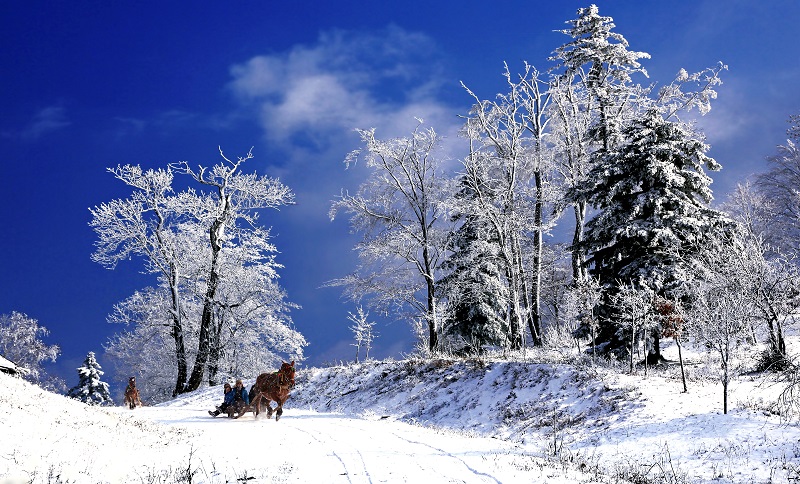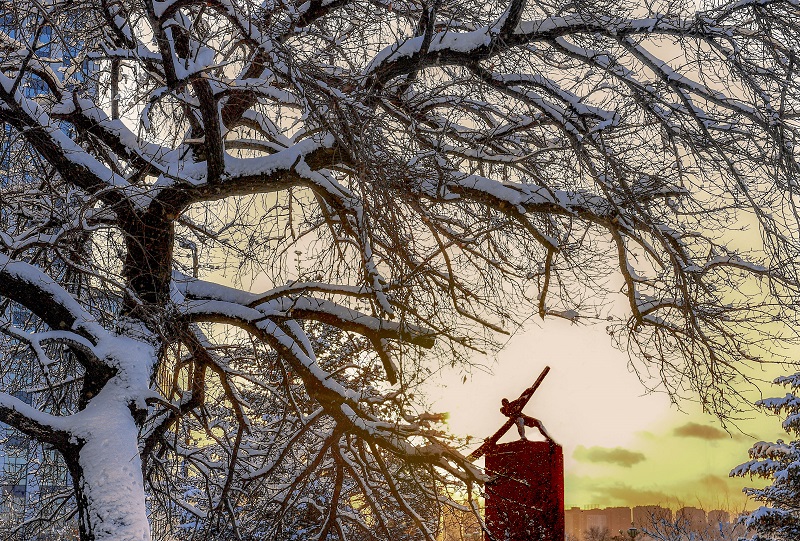
Songhua Lake is located in the southeast of Jilin city, 15 kilometers away from the main urban area. The lake is in a narrow shape, 200 kilometers long, 10 kilometers at the widest place. The lake covers an area of 554 square kilometers, with an average depth of 22 meters, the deepest being 77.5 meters. The maximum storage capacity is up to 10.8 billion cubic meters. The total area of the scenic spot is 700 square kilometers.
Songjiang rime scenery can join the natural landscapes in Guilin, stone forest in Yunnan and Three Gorges on the Yangtze River as four major natural wonders of China.
Rime is found mainly along the banks of the Songhua River and on the rime island.
Due to the cold winter climate, the temperature in the early morning is generally as low as Minus 20 to 25 degrees Celsius. Although the Songhua Lake is covered with one-meter-thick ice, the water released from the Fengman Hydropower Station is 4 degrees Celsius above zero. The warm water feeds vapor into the air, which condenses into fog soon because of the temperature difference. The water in the fog then freezes as it hits the cold winter air nearby, forming rime.

Rime is a white or milky opaque ice layer attached to the windward side of ground objects (such as branches and wires). It is also formed by condensation of supercooled water droplets. However, these supercooled water droplets do not fall from the sky, but are formed by condensation of water vapor which is floating in the air and is brought by the wind. This kind of water droplet, called fog droplet, is much smaller than the raindrop that forms glaze. In fact, it is the cloud droplet that composes the cloud. When they hit the surface of an object, they freeze quickly. Because many interspaces exist between the fog droplets than make up the rime, the rime is completely opaque white. Rime is light and white, attached to trees and other objects, which is called tree hanging or snow hanging. With small density, rime is light and adhesive. According to the records of Jilin meteorological station, Jilin rime season generally starts in late November and ends in early March of the next year.